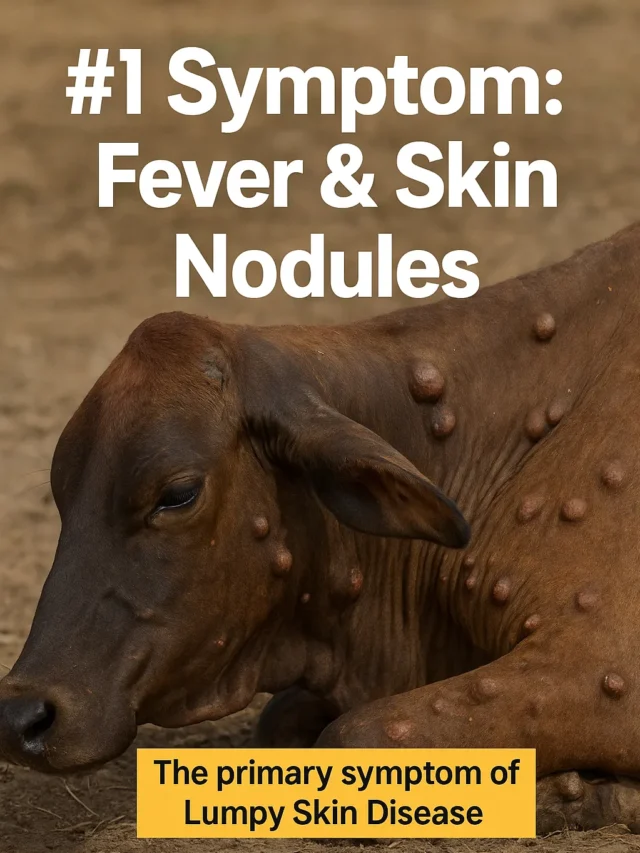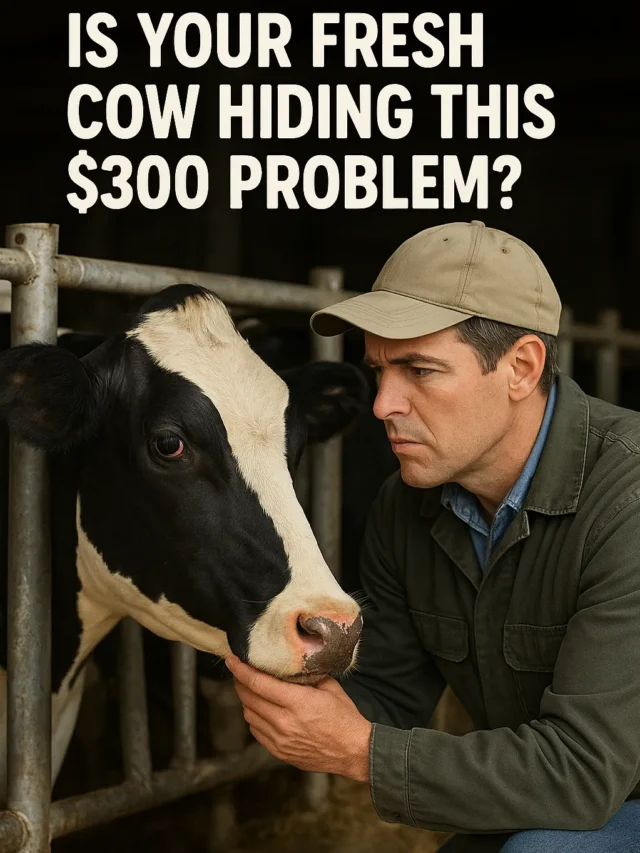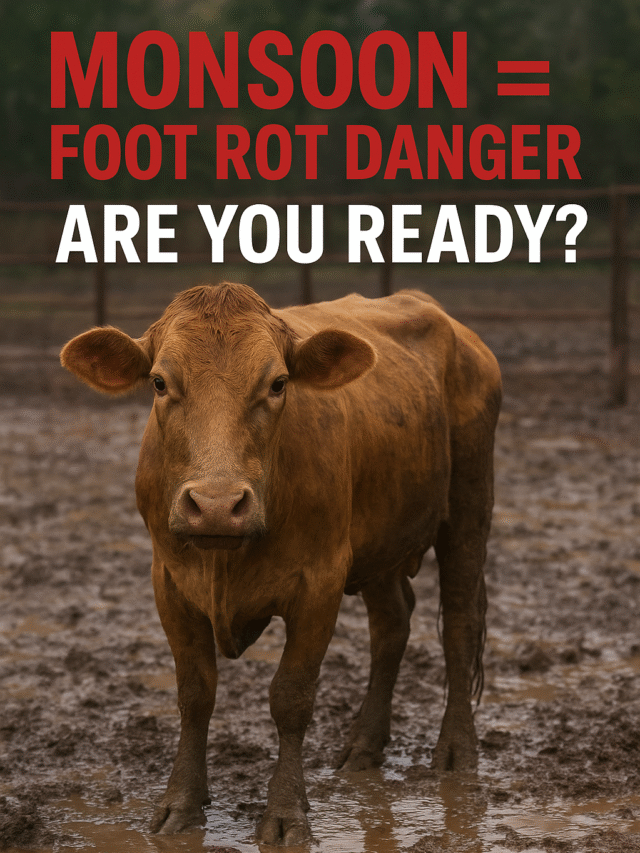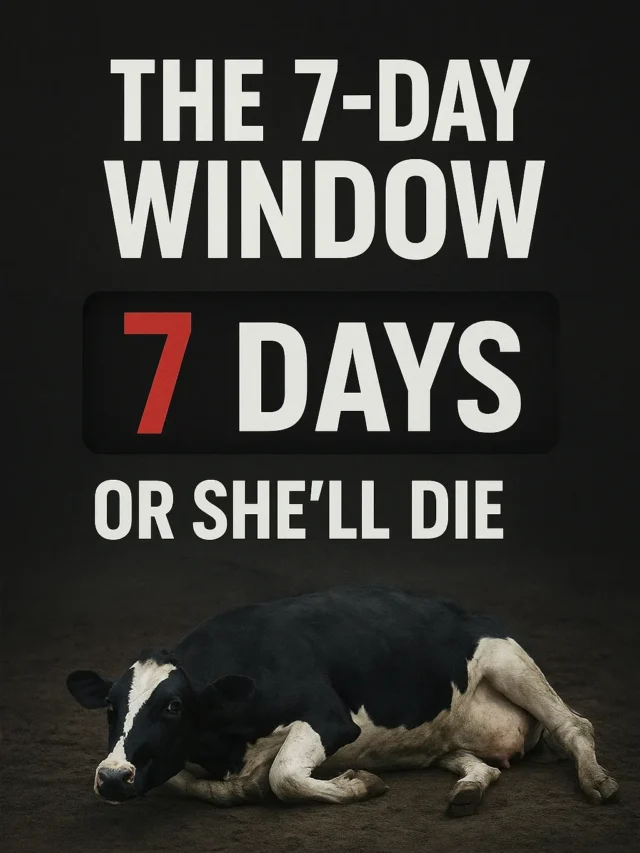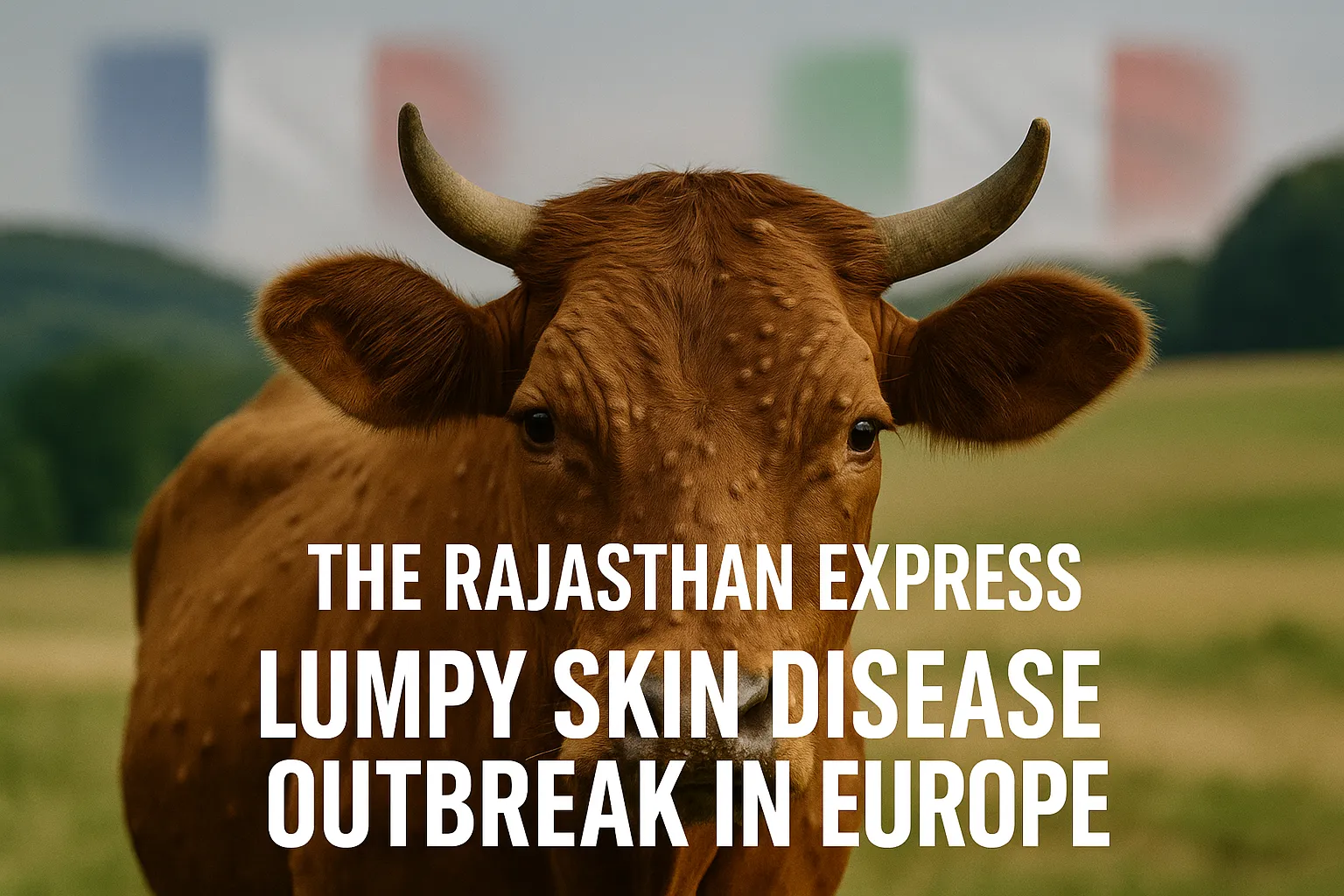First Cases of Lumpy Skin Disease in France and Italy Reported in 2025
The World Organisation for Animal Health (WOAH) has acknowledged the official notifications and follow-up reports concerning two recent outbreaks of Lumpy Skin Disease (LSD) in France and Italy. These represent the first confirmed cases of lumpy skin disease in Europe in these countries, highlighting an urgent need for veterinary oversight and monitoring to prevent further spread. Both France and Italy have already begun taking action in line with international disease control standards.
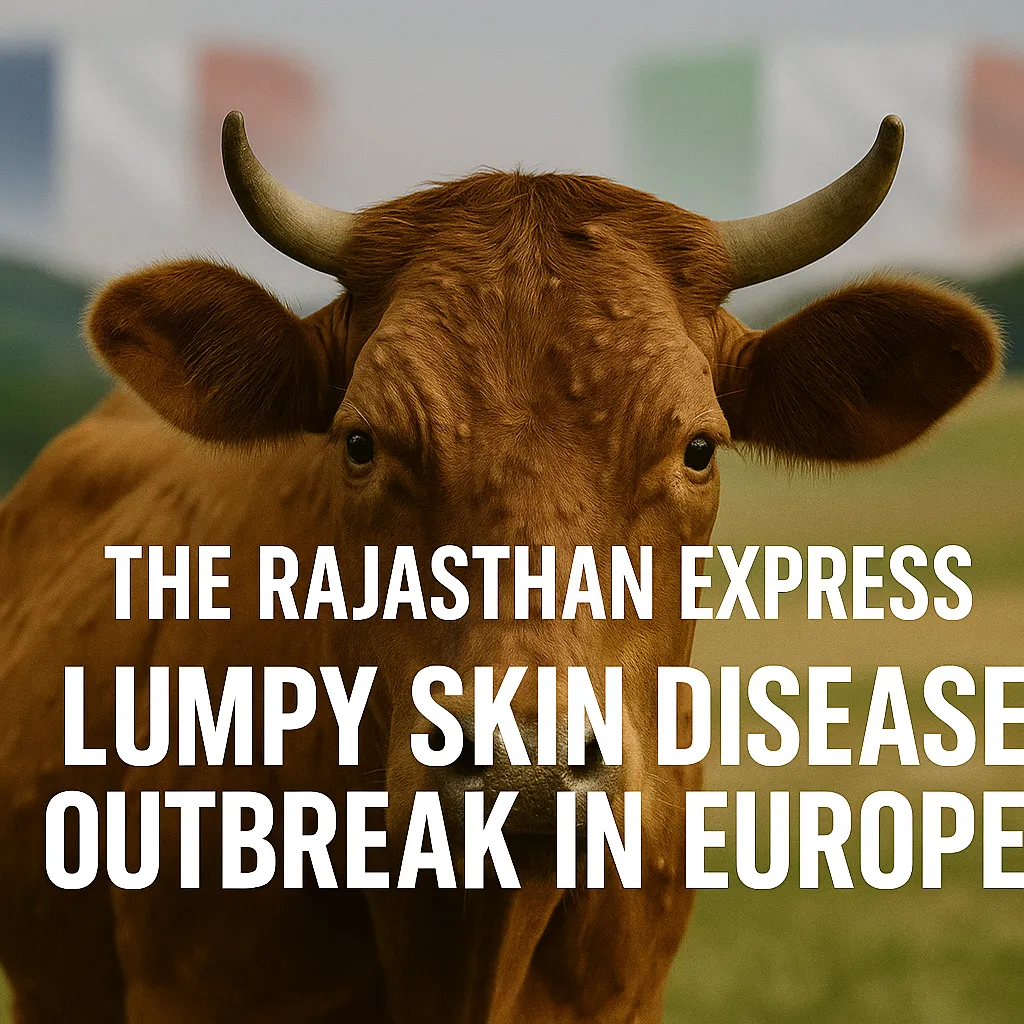
Lumpy Skin Disease in Cattle : THE RAJASTHAN EXPRESS
| Disease Classification |
|
|---|---|
| Etiological Agent |
|
| Host Range & Susceptibility |
|
| Epidemiology & Geographic Distribution |
|
| Transmission Dynamics |
|
| Clinical Presentation |
|
| Diagnostic Modalities |
|
| Vaccination & Control Strategies |
|
| Therapeutics & Supportive Care |
|
| Economic & Public Health Considerations |
|
| Recent European Outbreaks (June–July 2025) |
|
| Comprehensive Symptoms of Lumpy Skin Disease: THE RAJASTHAN EXPRESS | |
WOAH and FAO’s Long-Term Strategy Against LSD in Europe
From 2016 to 2024, WOAH collaborated with the Food and Agriculture Organization (FAO) of the United Nations and the European Union to coordinate a dedicated expert group on LSD in Southeast Europe. This group played a critical role in successfully eliminating the disease through effective vaccination and regional coordination. WOAH continues to monitor the epidemiological status of lumpy skin disease in Africa, the Middle East, and Asia, with Africa identified as the main endemic region.
Read More About LSD Disease : Lumpy Skin Disease in Cattle
What Is Lumpy Skin Disease and How Does It Spread?
Lumpy Skin Disease is a highly contagious vector-borne viral infection that primarily affects cattle, buffaloes, and certain wild ruminants. Beyond its impact on animal health and welfare, the disease can cause serious economic damage to farmers due to reduced milk production, weight loss, and reproductive issues. Importantly, LSD is not a zoonotic disease—it poses no threat to humans, either through direct contact or through the consumption of animal products such as milk or meat.
The virus is mainly transmitted through biting insects like flies and mosquitoes. The movement of infected animals into unaffected areas is a key factor in the disease’s long-range transmission. According to the WOAH’s World Animal Health Report, early detection and rapid response—including movement restrictions and high-quality vaccination—are critical in controlling LSD outbreaks. Cross-border and multi-sectoral cooperation is essential for effective prevention and control.
Etiology of Lumpy Skin Disease
Lumpy skin disease is mainly caused by Capripoxvirus of the Poxviridae family, which is also known as Neethling virus. LSDV is a double-stranded DNA virus. Additionally, this disease can also be caused by Sheep pox and Goat pox viruses. Like other members of the Poxviridae family, Capripoxviruses are brick-shaped. This virus is one of the largest in size, with an average size of 320 nm × 260 nm. It is a highly contagious disease that can spread from one animal to another.
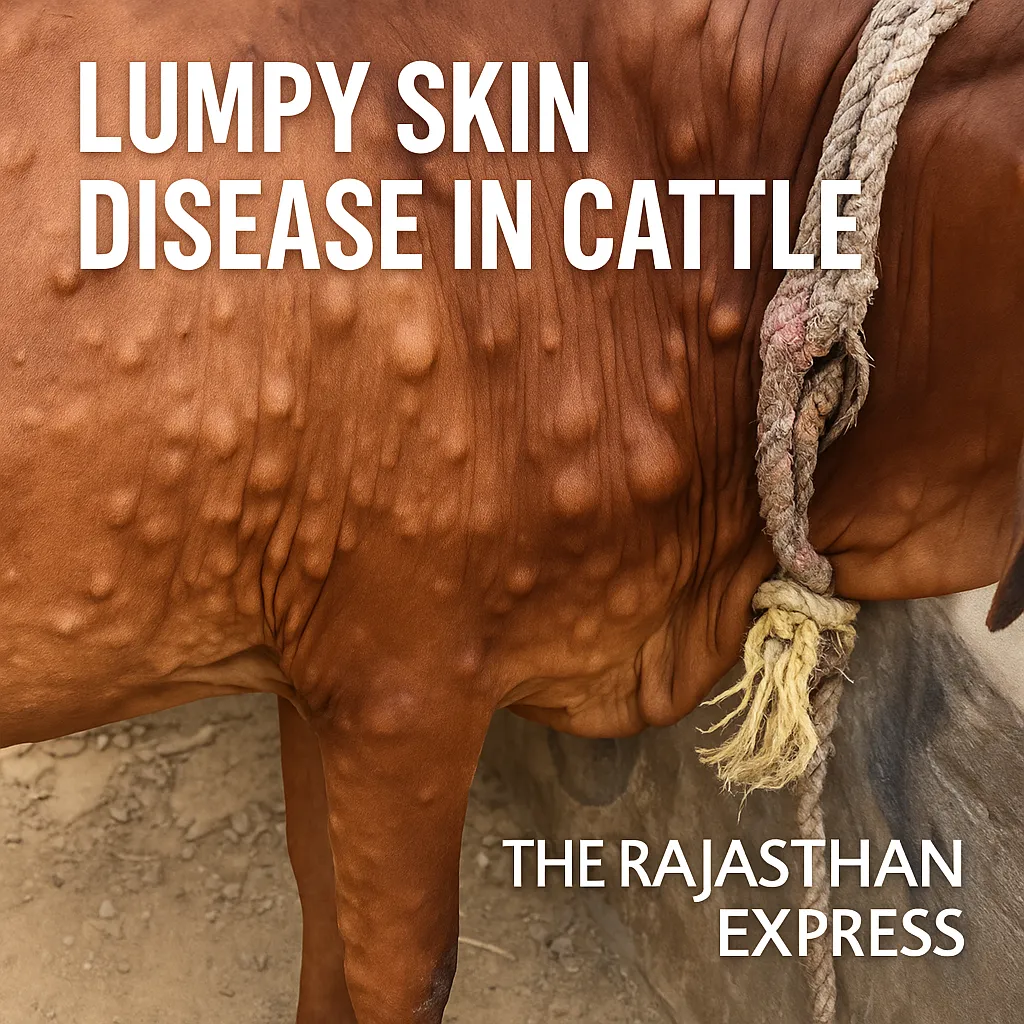
Modes of Transmission of Lumpy Skin Disease
- In animals infected with Lumpy Skin Disease, the virus can survive in saliva for 11 days, in semen for 22 days, and in skin nodules for up to 33 days.
- This disease spreads more during seasons with high temperature and humidity, especially during summer and monsoon.
- The main spread of Lumpy Skin Disease occurs through blood-sucking insects such as mosquitoes and flies.
- This disease can also spread through contact with the blood, nasal discharge, tears (lacrimal secretion), semen, and saliva of infected animals.
- It can also spread in calves, especially during suckling.
- Transmission of the virus through semen is also possible, meaning it can spread during mating, although this is very rare.
- One case of transmission through the uterus has been recorded.
Symptoms of Lumpy Skin Disease in Cattle
This is a cattle disease in which symptoms such as fever, nodules on the skin/mucous membranes/internal organs, physical weakness, swollen lymph nodes, skin inflammation (edema), and sometimes death are seen. The emergence of nodules on the animal’s skin is the main identification of this disease, which causes the animal to suffer from severe inflammation. Also, high fever, inflammation in the respiratory tract, and lameness in the legs are observed in the animal.
Combating Misinformation About Lumpy Skin Disease in Europe
WOAH is committed not only to controlling lumpy skin disease in Europe but also to combating misinformation about the illness. LSD is a viral disease but not zoonotic—it cannot be transmitted from animals to humans. Misconceptions, such as the idea that LSD is caused by vaccination, are completely false and can undermine public trust in disease control efforts. Such myths may distract from the proven benefits of vaccination before the disease has a chance to spread.
Past Outbreaks and the Dangers of Fake News
In 2022, India’s Rajasthan state witnessed an LSD outbreak that resulted in the death of nearly 50,000 cattle, causing severe economic hardship for local livestock owners. At the same time, social media platforms spread false claims suggesting that LSD could be transmitted to humans through milk consumption, which is scientifically untrue. Having personally observed field conditions, it is clear that such misinformation—such as the belief that drinking milk from infected animals could transmit the disease—is entirely unscientific. This type of misinformation breeds public doubt and hampers both the containment and eradication of such diseases.
WOAH’s 2025 Statement on Reliable Disease Information
In its official July 3, 2025 statement, WOAH urged all individuals, especially those in the animal health and agricultural sectors, to rely solely on scientific and credible information. The organization has developed FAQs and technical resources to address common questions and provide clear guidance for veterinarians, farmers, and policymakers.
Lumpy Skin Disease Outbreak in Europe WOAH’s Statement : https://www.woah.org/en/statement-on-recent-lumpy-skin-disease-outbreaks-in-europe/
Strengthening Communication Between Science and Livestock Communities
WOAH continues to strengthen its outreach by enhancing communication between scientific authorities and livestock communities. The organization maintains ongoing collaboration with its reference lab network and member countries, regularly conducting webinars and information-sharing initiatives to review existing protocols and determine next steps in disease control.
Outbreak of lumpy skin disease in France and Italy marks first cases in Europe. WOAH urges scientific awareness and early control to prevent spread.
THE RAJASTHAN EXPRESS
Frequently Asked Questions About Lumpy Skin Disease (LSD)
Is Lumpy Skin Disease caused by vaccines?
No, LSD is not caused by vaccines. It is a viral disease caused by the Lumpy Skin Disease Virus (LSDV), a member of the Capripoxvirus genus. Misinformation linking vaccines to LSD outbreaks has been explicitly debunked by WOAH (World Organisation for Animal Health), which states that claims of vaccines causing LSD are “outright false” and undermine disease control efforts. Vaccines may cause mild side effects (e.g., transient fever or skin nodules), but these are distinct from actual LSD infection.
How did LSD spread to Italy and France in 2025?
The 2025 outbreaks resulted from two primary mechanisms:
- Insect vectors: Biting flies and mosquitoes transmitted the virus from endemic areas to Sardinia, Italy, where the first case was reported on June 21, 2025.
- Movement of infected animals: An infected cow transported from Sardinia to Lombardy (Northern Italy) triggered secondary outbreaks. France’s first case (June 23, 2025, in Savoy) likely originated from infected insects or cross-border cattle movement, though the exact source remains under investigation.
Clusters of outbreaks in both countries suggest localized transmission via vectors and human-mediated animal transport.
Can humans contract LSD from drinking milk?
No. LSD is not zoonotic and poses no risk to humans through milk consumption or direct contact with infected animals. WOAH and clinical studies confirm that the virus cannot survive pasteurization, and even raw milk from infected cattle is safe for human consumption. Misinformation during India’s 2022 outbreak falsely linked milk to human transmission, causing unnecessary panic and economic losses for farmers.
What is the economic impact of LSD on farmers?
LSD causes severe financial losses due to:
- Production decline: Milk yield drops by 40–85%, and weight loss reduces meat quality.
- Treatment/vaccination costs: Farmers spend ~$35 per animal on antibiotics and supportive care.
- Trade restrictions: Export bans on livestock, semen, and hides (e.g., UK halted bovine imports from Italy/France).
- Mortality: Outbreaks like India’s 2022 crisis killed 50,000 cattle in Rajasthan alone, crippling small-scale farmers who rely on livestock for 35–40% of their income.
Are LSD vaccines safe and effective?
Yes, vaccines are the primary tool for controlling LSD:
- Live attenuated vaccines (e.g., Neethling strain) offer 70–100% protection with immunity lasting 6–15 months.
- Inactivated vaccines are safer but require boosters and show variable efficacy.
- Safety: Minor side effects (e.g., transient fever) occur in <5% of cases. No evidence of vaccine-induced LSD transmission exists.
WOAH emphasizes using high-quality, internationally approved vaccines to ensure efficacy.
| Vaccine Type | Example Strains | Efficacy | Duration |
|---|---|---|---|
| Live attenuated | Neethling LSDV, SPPV (Bakirköy) | 70–100% | 6–15 months |
| Inactivated | New DIVA vaccines | 50–70% | Short-term (requires boosters) |
Is travel to Europe affected during LSD outbreaks?
Human travel is unaffected as LSD poses no human health risk. However:
- Livestock/animal product restrictions: The UK suspended imports of live cattle, semen, raw milk, and untreated hides from Italy/France.
- Precautions: Travelers should avoid farms to prevent accidental vector transport. Personal hygiene (e.g., disinfecting shoes) is advised after farm visits.
What are the first signs of LSD in cattle?
Early symptoms appear 4–14 days post-infection:
- High fever (104–106°F).
- Skin nodules: 2–5 cm diameter, hard, painful lumps on the head, neck, genitals, and udder.
- Systemic issues: Nasal/ocular discharge, reduced milk yield, and lameness.
Visual reference: LSD symptoms in cattle (The Rajasthan Express) shows nodules and lesions.
How can LSD be prevented without vaccines?
Non-vaccine strategies focus on vector control and biosecurity:
- Insect management: Spray insecticides (e.g., cypermethrin) and eliminate breeding sites (stagnant water).
- Quarantine: Isolate new or infected animals for 28 days.
- Hygiene protocols: Disinfect equipment with 2% formaldehyde or iodine compounds.
- Movement restrictions: Limit cattle transport from outbreak zones.
While helpful, these methods are less effective than vaccination during epidemics.
